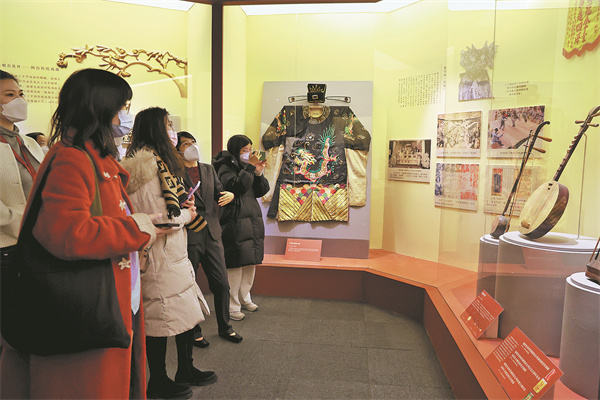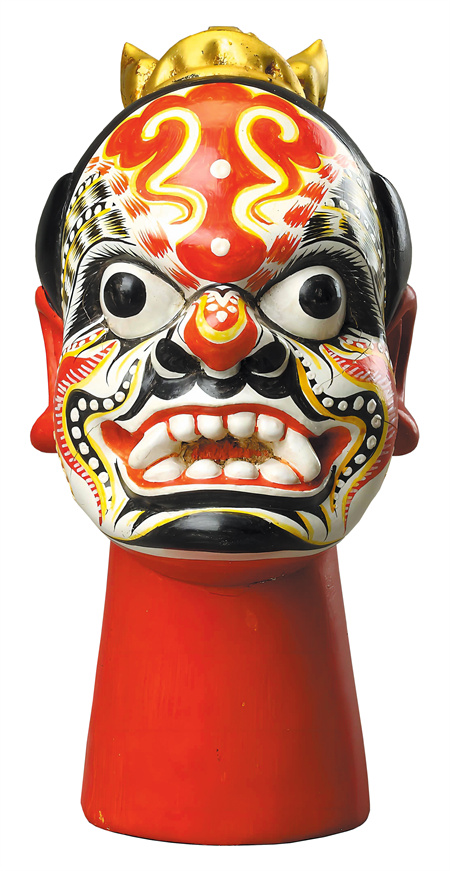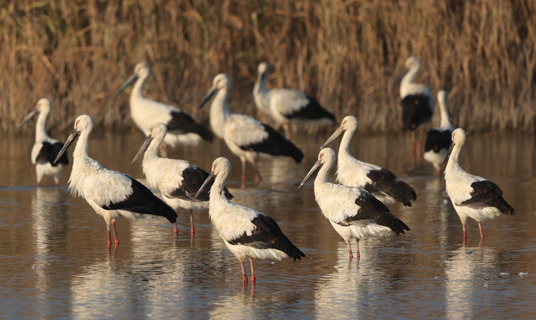Cultural traditions stand the test of time

Objects of various kinds are shown at an exhibition at the National Museum of China to spotlight the shared roots and intimate kinship across the Straits.[Photo provided by Jiang Dong/China Daily]
Artworks from Fujian and Taiwan spotlight 'intimate kinship' forged over centuries across the Straits, Lin Qi reports.
When boarding a train or plane in Fujian province, people might be surprised to find seats purchased by pilgrims to place the statue of a lavishly dressed woman, surrounded by uniformed guardians. She is treated with such respect and care, because of her courageous and tragic life story.
Legend has it that the maiden named Lin Mo lived in a seaside village on Meizhou Island, Fujian, in the 10th century. She was kindhearted, and died when attempting to rescue people fishing out at sea and confronting a thunderstorm. Her fellow villagers built a temple, where they made a seated statue of her in remembrance, and worshiped her as a goddess, under the honorable title Mazu, to protect those who depend on the sea for a living.
The worship evolved into a belief popular among people living in coastal areas, with sacrificial ceremonies and relevant customs and tales developing as natives of Fujian migrated elsewhere, and spread the Mazu belief in their communities around the world.
Taiwan is one of the places where the belief is widely observed, as many from its population trace their ancestry to Fujian, especially the southern part of the province. This long-standing bond is under the spotlight at Shared Roots, Intimate Kinship, an ongoing exhibition at the National Museum of China in Beijing. Four wooden and ceramic Mazu statues created in different times are on show, reflecting her veneration that still thrives in Fujian and Taiwan.
One of the grand commemorative events held regularly is a tour of the original statue from Meizhou, her birth place, to cities, nationwide and abroad, where Mazu pilgrims can pay tribute to her. And, the fast development of rail transportation and aviation is a reason why passengers will find Mazu statues aboard.
Showing more than 400 objects from the collection of the National Museum of China and museums in Fujian, the exhibition, running through April 9, is a celebration of shared cultural traditions between the mainland and Taiwan, being passed down since ancient times till today, in various forms of art and antiquity.
Wang Yujie a designer of the exhibition's layout says red and yellow wallpaper were picked to go with the objects on show to "give people a vivid feeling as if they were in a classic civil dwelling found in southern Fujian and Taiwan, the red bricks and roof ridges with both ends pointing upward".
She says that was done to "create an atmosphere of home, which is of importance to the Chinese" and where the warmth and sense of belonging will unite members of the same family.
The long history of China has witnessed several relocations of massive populations from the Zhongyuan region, in today's Central China, to then less-developed southern area, which took place amid wars and social chaos. The exhibition traces the history of one that happened in the declining time of the Western Jin Dynasty (265-316), when battles between the ruling parties and constant revolts forced people — among them were those from the elite class such as the scholar-bureaucrats — to flee southward to safer and more stable settlements. A destination was Min, which is known as Fujian today.
Many of those who were seeking refuge were grouped into eight family names, brought wealth and cultural traditions that boosted economic and social developments in Fujian. They also integrated into local communities to create new cultural traditions.
Another noticeable relocation in the province started some 1,000 years later, amid the instability of the late Ming Dynasty (1368-1644).This time, people in Fujian left, in large numbers, to an island just across a narrow passageway of sea, known as Taiwan today.
It is no wonder that residents on both sides of the Taiwan Straits share a lot in common, in the aspects of social etiquette, folklore, cuisine, dialects and styles of classic architecture, among others. The situation is especially true with Fujian from where many migrants settled in Taiwan.
Li Xue, the exhibition's curator says, "Many forms of handicrafts were taken by Fujian migrants to Taiwan. A sophisticated sculpted table lamp on show, for example, reflects that the technique of wood carving, coated with gold and lacquer, was introduced to Taiwan by artisans from the mainland, and developed into an important genre of wood carving there".
Objects related to Zheng Chenggong, the 17th-century admiral who led forces to expel Dutch occupiers and recover Taiwan, are also in the spotlight at the exhibition, including an ink figure painting of him, from the Qing Dynasty (1644-1911), and a jade belt of the general, the kind that was then exclusive to high society and those rewarded with titles by the emperor.
Li says the items were donated to museums by descendants of the Zheng family.

A wood puppet head made by Jiang Jiazou, a puppet-making artist in Fujian province, is on show at the National Museum of China in Beijing.[Photo provided to China Daily]




